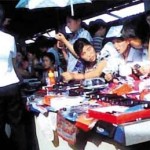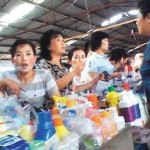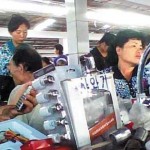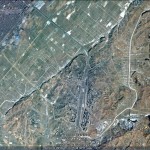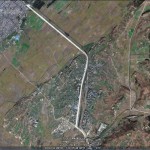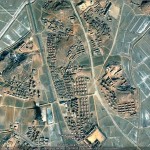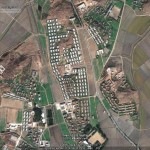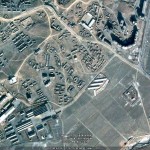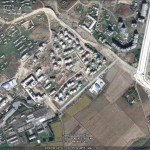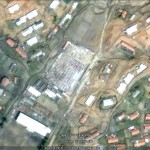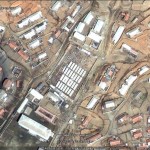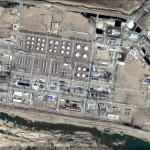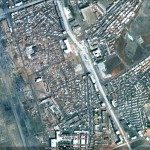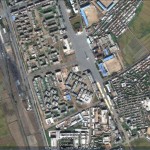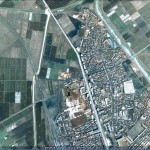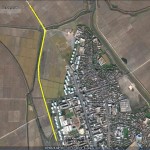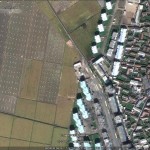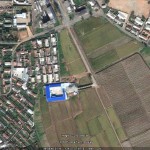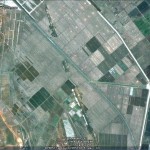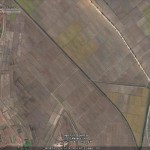According to the Daily NK:
An inside source reports that popular dependence on foreign currencies for trading continues in spite of last year’s currency redenomination, to the extent that market traders are openly setting separate prices in U.S. dollars or Yuan alongside the depreciating North Korean won.
The inside source from Pyongyang explained to The Daily NK on September 5th, “In recent market trading, usage of dollars has increased rapidly, and now market prices are being set according to a dollar standard. Even when money is loaned and repaid, the amount for repayment is decided based on the dollar standard.”
As of September 2nd, the exchange rate in Pyongyang was around 150,000 won to $100, as North Korean people refer to it. Loans made in North Korean won are always calculated according to the value of the dollar, and the value of the loan fluctuates accordingly.
The source added, “Recently, market merchants have been setting separate Yuan or dollar prices, except for on rice, corn, and ingredients for side-dishes. The fabric stalls in Sunkyo market in Pyongyang put up all their prices in dollars.”
“Especially in the case of wholesalers,” he added, “they are all trading in dollars or Yuan. They depend on foreign currency since the value of the North Korean currency has fallen so badly and also because there is a lack of large-denomination bills.”
Since 2000, Yuan has been in common use alongside the North Korean currency in border regions. The popularity of dollars is higher in Pyongyang and North and South Hwanghae Provinces. Especially in cases where the unit price of the item is high, such as for home appliances or industrial products, most are dealt with in dollars or Yuan.
However, this is also now spreading to lower value consumer goods like shoes and clothing. Dollar and Yuan prices are applied to such items even when the seller is not a foreign currency store or international hotel.
Despite the fact that the North Korean currency was redenominated at a rate of 100:1 on November 30th, 2009, the monetary authorities have not been able to break North Korea’s inflationary cycle. Currently, rice in North Korean markets goes for around 900 won per kilo, which is only around half the 2,000 won it cost prior to the redenomination, far from the approximately 20 won it would cost in a more stable economy.
The source explained, “The value of the won is unstable, making foreign currency exchange rates more volatile. So merchants are selling products at higher prices than normal to compensate for their losses. This phenomenon is creating in them the mentality of raising their product prices.”
He also emphasized, “Prices for all products imported from China are set in dollars or Yuan. Considering the fact more than 90% of products in the North Korean market come from China, it looks like a world in which the North Korean currency is useless is coming.”
The source added, “Since Yuan are used quite commonly in North Hamkyung Province, Yangkang Province, and Shinuiju, a phrase, ‘This is Chinese land!’ is spreading. At the same time, since the dollar is used a lot in Pyongyang, Sariwon, Haeju, and Wonsan, another joke suggesting that ‘here is U.S. soil!’ is going around as well.”
With last November’s currency reform, North Korea’s dependence on foreign currency has increased to the point that market prices today are determined in terms of dollars or yuan.
According to Daily NK’s internal sources in Pyongyang, a recent surge in the use of dollars in market transactions has meant that market prices of goods are now determined based on dollars. Moreover, it has been revealed that individuals lending and borrowing money from one another collect and pay the interest in dollars.
As of September 2, the exchange rate in Pyongyang was about 100 US dollars to 150,000 won. If someone was to borrow 150,000 North Korean won from a friend, he would later have to repay that loan in however much North Korean won is equivalent to 100 US dollars at the time.
The source said, “These days, the merchants in the market charge everything in yuan and dollars, except for rice, corn or side dishes,” and, “Clothing stores in Pyongyang’s Seonkyo Market have actually put up signs indicating prices in dollars.”
The source added, “Wholesale merchants, especially, do all of their business in dollars or yuan now,” and “The value of North Korean money has fallen, and there are no more large bills anymore, so everyone is dependent on foreign currency.”
After 2000, the yuan and the North Korean won were both came into common use in the border area between North Korea and China, while the dollar became popular in Pyongyang and Hwanghae Province. Expensive items, such as electric home appliance or industrial goods, were more often than not bought and sold in terms of dollars or yuan, bypassing North Korean currency altogether.
However, recent trends show that the use of dollars and yuan has spread to the sale of shoes, clothes, and other everyday consumer goods. Stores put up signs indicating prices in dollars and yuan, once done exclusively by currency exchange shops or hotel restaurants frequented by foreigners.
Last year, North Korea depreciated its currency at a rate of 1:100 in an attempt to reform its currency, but the efforts to control inflation throughout the country failed. The price of rice in North Korean markets today is about 900 won per kilogram, about half the price it was before currency reform (about 2000 won per kilogram).
The source explained, “Because the value of the won is unstable, the exchange rate varies wildly. In order to not lose money, merchants have been fixing their prices higher than normal.”The source emphasized, “Goods from China are all sold in dollars or yuan,” and “Considering that over 90% of the commodities circulating in the markets today are from China, it appears that North Korean money will be rendered useless in the near future.”
“In North Hamkyeong Province, Yangkang Province, and Sinuiju, where the yuan is often used, they say ‘This is Chinese land,’ and in Pyongyang, Sariwon, Haeju, and Wonsan, where the dollar is often used, they joke, ‘This is American land,’” added the [sic].
Read the full stories here:
North Korea’s Fiscal Sovereignty Collapsing
Daily NK
Park In-ho
9/6/2010
North Korea’s dependence on foreign currency increases
Institute for Far Eastern Studies
NK Brief No.10-09-07-2
9/7/2010

